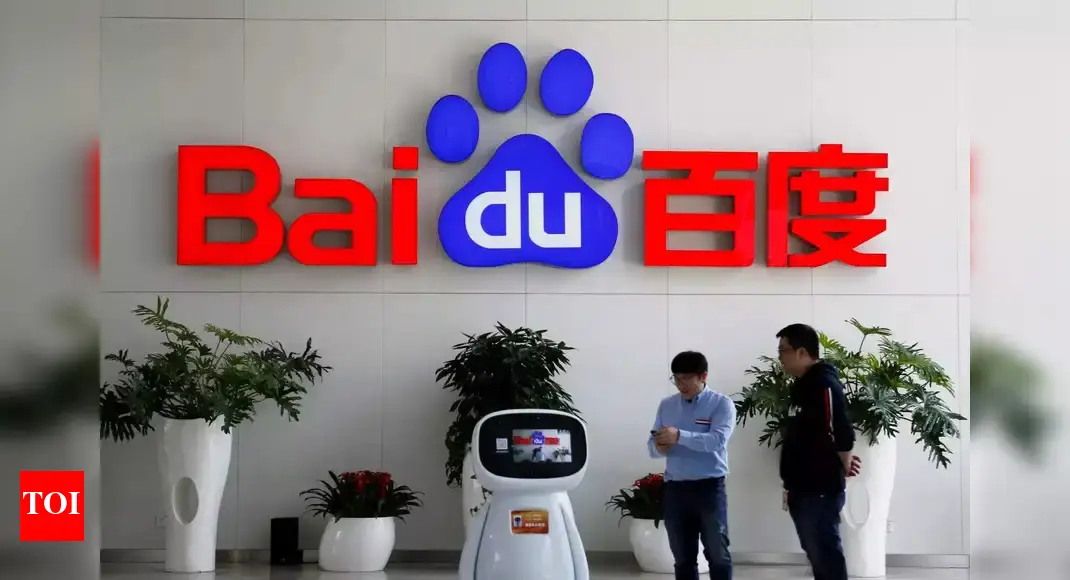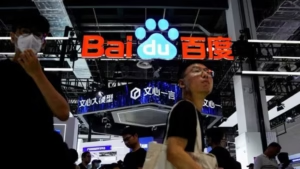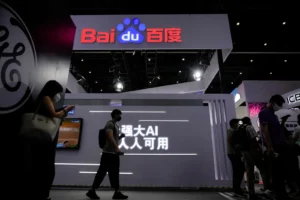Baidu’s ERNIE X1.1 — a reasoning-first model that tightens the gap with Western giants
Meta / TL;DR: Baidu’s ERNIE X1.1 is an incremental but meaningful upgrade to the company’s “reasoning-first” family (built on ERNIE 4.5 / X1). It focuses on factuality, instruction-following, and agentic/tool-oriented tasks, and — according to Baidu and independent reports — narrows the performance gap with leading systems such as GPT-5 and Google’s Gemini. ERNIE X1.1 ships with new training recipes (an iterative hybrid reinforcement-learning loop and self-distillation), better hallucination control, and deeper integration into Baidu’s cloud and agent tooling. Reuters+1
1. Why ERNIE X1.1 matters (short answer)
Baidu has been aggressively positioning ERNIE as a set of models that emphasize deep thinking (reasoning, planning, tool use) and multimodal understanding. ERNIE X1.1 is the follow-up to ERNIE X1 and ERNIE 4.5 and is explicitly engineered to reduce hallucinations, improve instruction following, and be more reliable when operating as an “agent” (tool-calling, stepwise reasoning, constrained problem solving). The launch signals Baidu’s intention to compete head-to-head with the top-tier models from Western companies while optimizing for cost and integration within its own ecosystem. Reuters+1
2. What’s new in ERNIE X1.1 — the headline upgrades
Baidu’s public statements and press coverage highlight several concrete improvements in X1.1 compared to X1/ERNIE 4.5:
-
Factuality improvements: Baidu reports a large improvement vs X1 in factual correctness; independent coverage cites a ~34.8% boost in factuality metrics over the previous X1. That’s significant because factuality (reducing hallucinations) is one of the most-cited weaknesses of large language models. Analytics India Magazine+1
-
Instruction following & agentic gains: Reported gains in instruction-following (~12.5%) and agentic capabilities (~9–10%) indicate the model is better at carrying out multi-step instructions, calling tools reliably, and adhering to constraints. These improvements matter for developer workflows and production agents. Analytics India Magazine
-
Training recipe: iterative hybrid RL + self-distillation: X1.1 uses a layered training regimen that Baidu describes as an “iterative hybrid reinforcement learning” approach combined with iterative self-distillation. In plain terms: the model is fine-tuned with reinforcement signals that reward correct sequences of reasoning and also distilled repeatedly to consolidate those gains into a stable, smaller inference footprint. This is an increasingly common pattern for improving reliability without ballooning inference costs. PR Newswire
-
Benchmark positioning: Baidu claims ERNIE X1.1 outperforms or matches several contemporary public models in key tests (some press reports say parity with GPT-5 and Gemini 2.5 Pro on selected benchmarks), and show advantages over recent open competitors like DeepSeek variants in certain tasks. Take these cross-model comparisons with caution: vendors choose benchmarks that favor their architectural decisions, but repeated independent evaluations are narrowing the uncertainty. PR Newswire+1
3. Architecture and design philosophy (reasoning-first)
ERNIE X1.1 is not simply a bigger decoder-only model; it’s part of Baidu’s “reasoning-first” line that emphasizes structured chain-of-thought, planning, and agentivity.
-
Foundation lineage: X1.1 inherits from ERNIE 4.5 and ERNIE X1. ERNIE 4.5 brought strong multimodal understanding and a foundation for later reasoning stacks; X1 prioritized multi-step reasoning and planning. X1.1 takes the reasoning elements and tightens factuality and instruction-following. Built In+1
-
Efficiency + performance trade-offs: Some reporting indicates Baidu continues to explore Mixture-of-Experts (MoE) and “sparse activation” designs across its model family to maintain high performance while bounding inference compute. For many real-world deployments, this is crucial: you want an agent that can think deeply without costing as much as a full dense 100B+ model every time. (Vendor statements suggest X1.X variants target cost-effective inference.) Barchart.com+1
4. Training data, safety and hallucination controls
Baidu’s public materials emphasize not just scale but signal quality:
-
Data curation and alignment: The ERNIE family has used large multilingual corpora, multimodal datasets (text + images + code + structured documents) and iterative supervised signals from human raters. For X1.1, Baidu describes additional layers of RL-based alignment that reward factual chains and penalize unsupported assertions. That alignment focus is a major reason Baidu advertises large factuality gains. PR Newswire+1
-
Hallucination reduction strategies: Beyond RL, the company uses post-processing techniques—tool calling for external verification, retrieval-augmented generation (RAG) connectors, and constrained decoding—to reduce confidently incorrect outputs. In production settings (search, assistant agents) these are often more effective than raw model improvements alone. Analytics Vidhya
5. Benchmarks & how to read performance claims
Baidu and media both point to several benchmark results. Important points:
-
Vendor vs. neutral benchmarks: Vendor press-release numbers should be read as directional. Independent analyses and third-party evaluations provide more balanced views. Several outlets reporting on X1.1 show it beating certain models on targeted tests and matching others on broad suites. PR Newswire+1
-
Which benchmarks matter: For ERNIE X1.1’s use-cases, the most relevant tests are factuality measures, instruction-following suites, agentic/tool benchmarks, math and code reasoning, and multimodal VQA/DocQA tasks. Where X1.1 shows gains—factuality and agentic performance—those correspond to where customers often need reliability. Analytics India Magazine
6. Real-world availability and integration
Baidu is deploying ERNIE X1.1 across its product stack and cloud offerings:
-
Consumer-facing: Baidu has rolled ERNIE models into its Ernie Bot chat experience, where free public access to improved models helps collect feedback and rater data at scale. That public testing loop feeds further model improvement. X (formerly Twitter)+1
-
Enterprise & developer access: Baidu provides model access through Qianfan (Baidu AI Cloud) and SDKs for integration into enterprise apps, agent frameworks, and LangChain-like orchestration. This makes X1.1 usable for in-house agents, toolified workflows, and search augmentation. Analytics Vidhya
-
Edge / infrastructure choices: Baidu is experimenting with domestic chips (Kunlun P800 family) alongside traditional Nvidia hardware for parts of its stack—an important strategic move given global chip supply and export pressures. Baidu has reportedly tested Kunlun chips with ERNIE development efforts. Hybrid chip usage is part of how Baidu controls cost and supply chain risk. Reuters+1
7. Use-cases where ERNIE X1.1 can shine
Based on the design goals and reported improvements, the following verticals are natural fits:
-
Knowledge work assistants: Long-form synthesis, document Q&A, and constrained step-by-step workflows (legal, research summaries) where factual correctness and citation matter. Analytics India Magazine
-
Agentic systems & tool orchestration: Systems that must call external tools, perform multi-step actions, or maintain a working memory across tasks (e.g., orchestration for software builds, data pipelines, or automated customer service flows). The reported agentic gains are designed for these scenarios. PR Newswire
-
Multimodal document understanding: In enterprise automation (invoices, contracts, manuals), ERNIE’s multimodal lineage (4.5) helps with document VQA and structured extraction. Built In
-
Localized products for Chinese market: Baidu’s deep local language and web indexing advantages mean the model will be particularly strong for China-centric knowledge, regulatory contexts, and integrations tightly coupled to Baidu Search and services. Reuters
8. Limitations & open questions
No model is perfect; here are constraints to keep in mind:
-
Benchmark selection & reproducibility: Reported parity with GPT-5 or Gemini on selective tests is impressive but should be validated across independent benchmarks and when performing real customer tasks. Vendor comparisons sometimes emphasize strengths and downplay weaknesses. PR Newswire+1
-
Global availability & language support: Baidu’s ecosystem is China-centric. International access exists, but UI, localization, and data governance differences may affect adoption outside China. Analytics Vidhya
-
Regulatory & compliance considerations: As with all large models, deployment in regulated industries (healthcare, finance) will need safeguards: retrieval/verification layers, audit logs, and human-in-the-loop review. ERNIE X1.1’s factuality improvements help but do not eliminate the need for system-level controls. Analytics India Magazine
9. Strategic implications — what ERNIE X1.1 means for the market
ERNIE X1.1 is more than a product update: it’s part of a broader competitive story.
-
China’s AI race intensifies: Baidu’s improved reasoning models (with strong multimodal ancestors) show China’s major cloud/search players are building native alternatives to Western leaders. This raises both competitive and geopolitical narratives about local AI sovereignty and chip strategy. Reuters+1
-
Price-performance pressure: Baidu has emphasized cost-effective inference and claims of matching competitors at lower cost in previous ERNIE announcements. If X1.1 delivers strong reasoning at lower operational cost, it forces buyers to consider more cost-efficient options from Asian providers. Reuters
-
Ecosystem play: Beyond model-to-model comparisons, Baidu’s advantage is integration across search, cloud, developer tooling, and localized datasets. That ecosystem can be decisive for enterprises choosing a long-term provider. Analytics Vidhya
10. How to try ERNIE X1.1 (practical steps)
If you’re a developer, researcher or product lead curious to test X1.1:
-
Try Ernie Bot: Baidu exposes new models through Ernie Bot for consumer experimentation — a quick way to test instruction-following and conversational behavior. X (formerly Twitter)
-
Qianfan / Baidu AI Cloud: For production use, the Qianfan platform and Baidu’s cloud SDKs provide API access, enterprise SLAs, and integration with tool-chaining frameworks. Look for official SDK docs and LangChain connectors. Analytics Vidhya
-
Validate with your tasks: Run your own evaluation set (domain-specific prompts, retrieval chains, tool calls) rather than relying solely on vendor benchmarks. Focus on factuality checks, tool reliability, latency, and cost per useful response.
11. Final verdict — incremental but meaningful progress
ERNIE X1.1 reads as a pragmatic, engineering-first update: not a radical paradigm shift, but an important step in making reasoning-capable models more reliable, less hallucination-prone, and more agent-friendly. For enterprises invested in Baidu’s stack, X1.1 appears to be a real upgrade; for Western competitors, it’s another signal that global competition is accelerating. If the factuality and agentic gains hold up in independent testing, X1.1 will be a credible alternative in several production scenarios.
Bottom line: ERNIE X1.1 tightens the gap on reasoning and reliability. It’s worth testing if your use-case needs highly reliable multi-step reasoning, especially where Baidu’s ecosystem, cost model, or China-based data integration are advantages. PR Newswire+2Analytics India Magazine+2
Selected sources and further reading
-
Reuters — coverage of Baidu’s model launches and industry context. Reuters
-
Baidu / PR channels announcing ERNIE X1.1 and the technical overview. PR Newswire
-
Analytics India Magazine / Analytics Vidhya — independent write-ups and hands-on analyses summarizing gains and how to access the model. Analytics India Magazine+1
-
Reporting on infrastructure (Kunlun chips vs. Nvidia) and Baidu’s chip testing. Reuters
For quick updates, follow our whatsapp channel – https://whatsapp.com/channel/0029VbAabEC11ulGy0ZwRi3j
https://bitsofall.com/oracle-openai-partnership-reshaping-ai-infrastructure/
Arm’s new mobile chips: Lumex, Mali G1-Ultra, and the push to put AI on your phone







